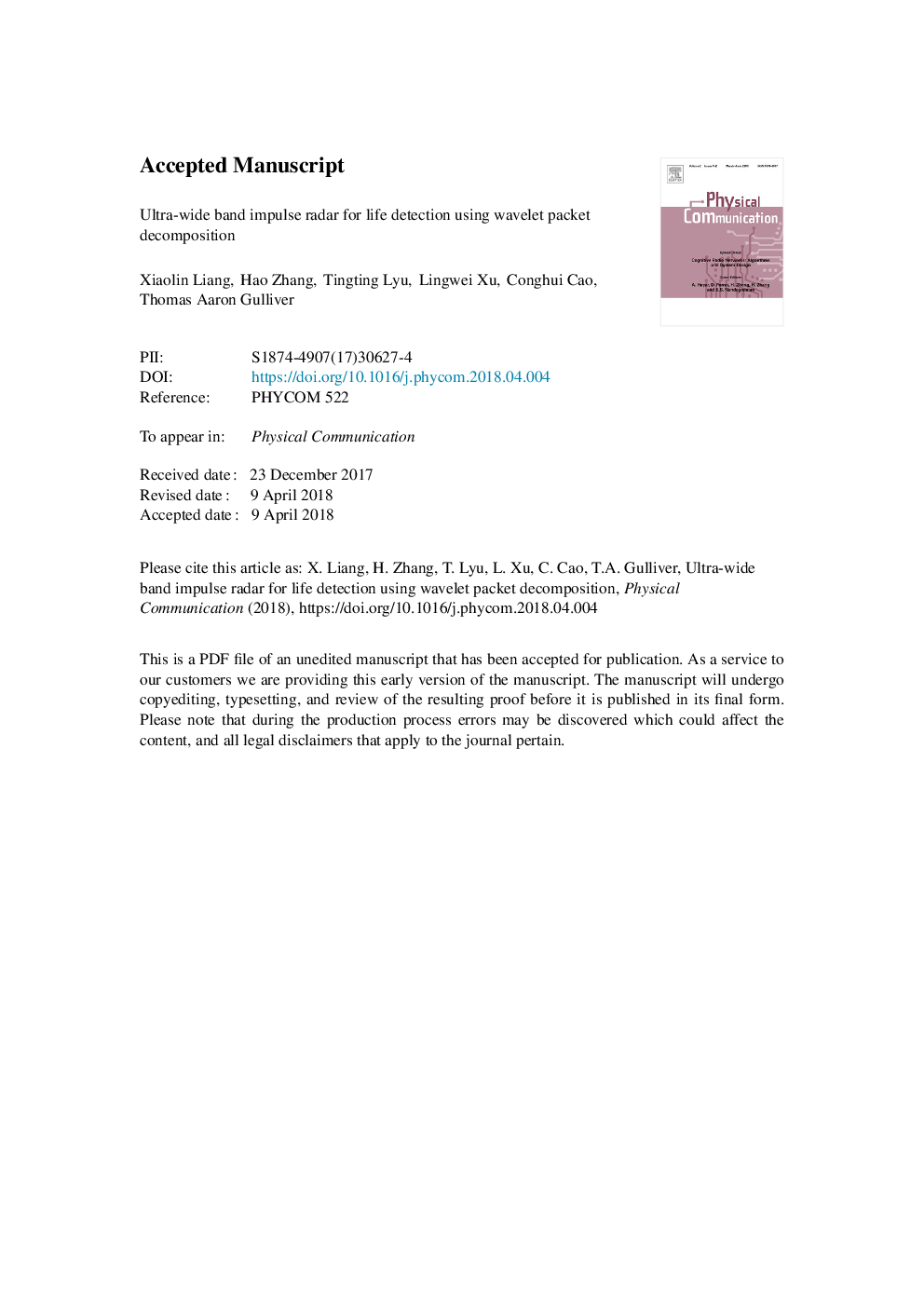| Article ID | Journal | Published Year | Pages | File Type |
|---|---|---|---|---|
| 6888942 | Physical Communication | 2018 | 41 Pages |
Abstract
This paper develops an improved algorithm for life detection based on ultra-wide band (UWB) impulse radars in through-wall condition. Usually, the cardiac-respiratory movement is the most significant sign of a living person, which can be extracted from the collected pulses. The proposed algorithm analyzes the variances of the collected pulses, which are mixed with various clutters. The time of arrival (TOA) between UWB radar and human target can be calculated by performing the wavelet packet decomposition on the calculated variances. The rates of human cardiac-respiratory movement are acquired based on the variable time-window (VTW) method. Compared with several well-known algorithms, the developed method can provide competitive performance in life detection. Results acquired from different sites prove the efficiency and reliability of the method.
Keywords
Related Topics
Physical Sciences and Engineering
Computer Science
Computer Networks and Communications
Authors
Xiaolin Liang, Hao Zhang, Tingting Lyu, Lingwei Xu, Conghui Cao, Thomas Aaron Gulliver,
